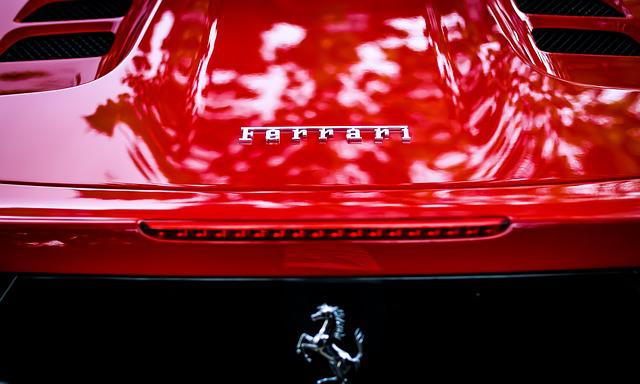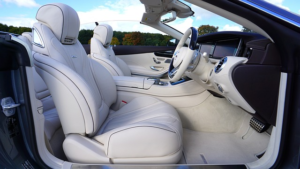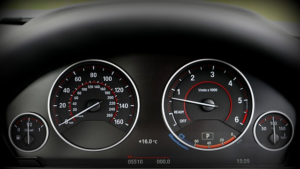Cocaine, cars and Crockett ‘n’ Tubbs: Did we underestimate Miami Vice? – The Independent
As Hollywood legend has it, Miami Vice began life with just two words scrawled on a scrap of paper by NBC executive Brandon Tartikoff: “MTV cops.” The television landscape had been revolutionised on 1 August 1981 by the launch of MTV, which ushered in an era of slick, glamorous music videos with high concepts and higher budgets.
When Miami Vice debuted in 1984, the show lived up to i…….

As Hollywood legend has it, Miami Vice began life with just two words scrawled on a scrap of paper by NBC executive Brandon Tartikoff: “MTV cops.” The television landscape had been revolutionised on 1 August 1981 by the launch of MTV, which ushered in an era of slick, glamorous music videos with high concepts and higher budgets.
When Miami Vice debuted in 1984, the show lived up to its initial pitch with a rock’n’roll soundtrack, fast cars and a flashy wardrobe provided by Armani, Versace and Hugo Boss. But it was also darker and more cynically subversive than it has since been given credit for.
A hugely popular hit throughout its six-year run, the show was rebooted in 2006 by original executive producer Michael Mann as a film starring Colin Farrell and Jamie Foxx which has gone on to become a cult favourite. As Mann returns to the small screen with Tokyo Vice – a new series based on US journalist Jake Adelstein’s memoir about crime in Japan – it’s worth remembering just how ground-breaking the original Miami Vice really was.
It may have been NBC’s Tartikoff who dreamed up the catchy “MTV cops” tag, but in truth the original idea for Miami Vice came from Anthony Yerkovich, an Emmy-winning screenwriter then working on gritty US cop show Hill Street Blues. Yerkovich had become intrigued by a newspaper report which claimed that nearly one-third of unreported income in the United States either originated in or came through South Florida. He soon realised how rich Miami would be as a setting for a crime show.
“I thought of [Miami] as sort of a modern-day American Casablanca,” Yerkovich told Time in 1985, noting the influx of refugees from Central America and Cuba as well as the flourishing drug trade. “There is a fascinating amount of service industries that revolve around the drug trade – money laundering, bail bondsmen, attorneys who service drug smugglers,” he added. “Miami has become a sort of Barbary Coast of free enterprise gone berserk.”
The idea of Miami as America’s answer to the licentious port that provided the setting for 1942 movie classic Casablanca is planted from the very first line uttered by Eighties heartthrob Don Johnson as the show’s complicated hero James “Sonny” Crockett. “Five-thousand street corners in greater Miami and Gumby here has gotta pick ours,” he quips, nodding to Humphrey Bogart’s infamous line about gin joints.
Yerkovich’s script for the two-hour pilot set the tone for the series, with Crockett’s partner, played by Brooklyn-born actor Jimmy Smits, blown up and killed within three scenes. This was a dark and dangerous world filled with violence and the ever-lurking presence of death, even if Crockett’s white linen suits remained spotless.
Importantly, unlike contemporary cop shows such as CHiPs and TJ Hooker, the police themselves are by no means incorruptible. Before the pilot is over, Crockett has accusatorily asked his own lieutenant how he can afford to send his son to private school on his pay. As with later shows like The Wire, the futility of the war on drugs is acknowledged in the way that whole new cartels spring up just as fast as Crockett and his debonair new partner Ricardo Tubbs (Philip Michael Thomas) can apprehend individual dealers.
It wasn’t just hardbitten storylines that set Miami Vice apart. There was also the way it looked. With a then-unprecedented budget of $1.3m per episode, the show was able to deliver feature film production value to your television set, which was increasingly likely to be in colour. To a large extent, Miami Vice’s visual identity can be credited to Michael Mann, who was fresh from reviving and rejuvenating the film noir genre with his feature film debut Thief in 1981. “It was vivacious, audacious, irreverent,” Mann told the Washington Post in 1985 about reading the pilot script. “It was something I’d been interested in doing for a long time: pump a contemporary rock and roll sensibility into a police-ier genre.”
Access unlimited streaming of movies and TV shows with Amazon Prime Video Sign up now for a 30-day free trial
Sign up
Mann took a hands-on approach to creating the show’s look, personally selecting everything from the actors’ shoes (Italian slip-ons) to the soundtrack (Glenn Frey, Chaka Khan, Tina Turner, The Rolling Stones) to the colour scheme (chic pink, key lime pie green, and a famous decree of “no earth tones”). The show transformed the way television shows would look forever. As The Sopranos creator David Chase told PBS in 2001: “I don’t think people cared about the visuals back in the Seventies. The first show that I can recall – hour drama – that did care about the visual was Miami Vice. I think that made kind of a sea change.”
Miami Vice’s aesthetic flair was present right from the start. In a prototypical sequence from the pilot episode that has since became famous, Crockett and Tubbs speed along Miami’s Biscayne Boulevard to a dangerous rendezvous with the reflection of street lights gliding across the sheen of Crockett’s black Ferrari. The soundtrack is Phil Collins’s “In The Air Tonight”. It’s undeniably stylish, but that doesn’t make the moment any less tense. Collins himself would appear in the show’s second season, playing a conman in an episode titled “Phil The Shill”, notable for Collins being one of the first people to ever utter the word “w**ker” on American television.
The calibre of Miami Vice’s writing, coupled with its ability to regularly draw in millions of viewers, helped the show garner an impressive roster of guest stars. Bruce Willis played an arms smuggler, Liam Neeson a terrorist and Julia Roberts a drug dealer’s girlfriend. In keeping with its rock’n’roll aesthetic, the show also attracted a plethora of musicians in cameo roles, including the aforementioned Collins, Leonard Cohen, who never actually makes it to Miami in his role as the French-speaking Interpol agent Zolan, and Willie Nelson as a Texas Ranger. By the time James Brown turned up belting out “I Got You (I Feel Good)” in season four as a UFO expert – and possible alien – the show was perhaps becoming less grounded but no less fun for it.
Executive producer Michael Mann hand-picked the ‘Miami Vice’ wardrobe, famously decreeing: ‘No earth tones’
(Universal Tv/Kobal/Shutterstock)
By 1985, less than a year after its debut, Miami Vice had become such a cultural phenomenon that it came full circle and ended up actually appearing on MTV. A video was produced for Czech-American composer Jan Hammer’s “Miami Vice Theme”, starring Crockett and Tubbs ostensibly on the keytar-wielding Hammer’s trail. The song went on to win a couple of Grammy awards as well as topping the US charts – the last instrumental to do so before US DJ and producer Baauer’s “Harlem Shake” in 2013.
The theme’s success was emblematic of the show’s vibrant, zeitgeist-defining style, but Miami Vice also had real substance lurking in its depths. As Yerkovich told the Miami Herald in 1989: “I wanted a city in which the American dream had been distilled into something perverse… I wanted to place an existential hero in a city based on greed.”
‘Tokyo Vice’ is on HBO Max in the US now and on Starzplay in Europe from 15 May. ‘Miami Vice’ is available to stream via Peacock in the US






